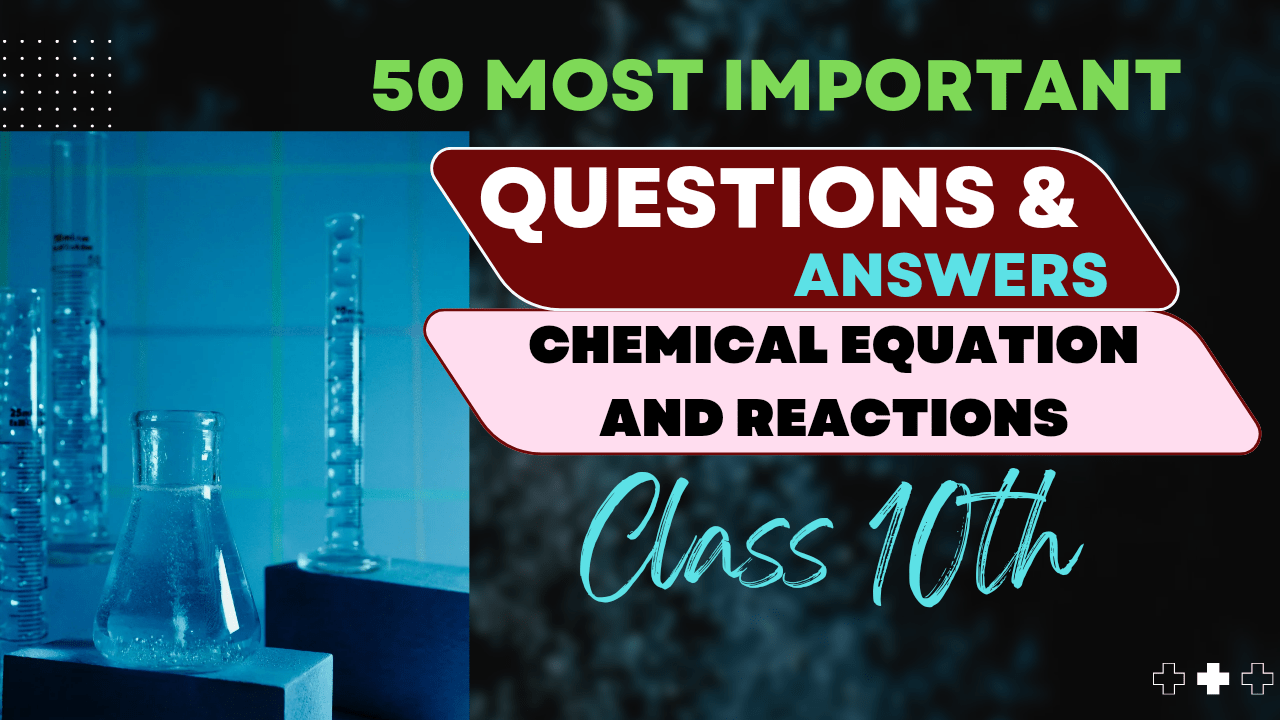Saturated and Unsaturated Hydrocarbons
Types with Examples
Introduction to Hydrocarbons
Hydrocarbons are organic compounds consisting exclusively of carbon and hydrogen atoms. They form the foundational building blocks of organic chemistry and serve as the backbone for numerous natural and synthetic compounds. Understanding the classification, properties, and reactions of hydrocarbons is essential for students preparing for chemistry examinations.
Based on the types of carbon-carbon bonds present in their molecules, hydrocarbons are broadly classified into two main categories:
- Saturated hydrocarbons – containing only single bonds between carbon atoms
- Unsaturated hydrocarbons – containing at least one double or triple bond between carbon atoms
This blog post explores both categories in depth, highlighting their structures, properties, reactions, and significance in various applications.
Saturated Hydrocarbons (Alkanes)
Saturated hydrocarbons, also known as alkanes, are hydrocarbons in which all carbon-carbon bonds are single bonds. The term “saturated” refers to the fact that each carbon atom is bonded to the maximum number of hydrogen atoms possible.
General Formula
The general formula for alkanes is CnH2n+2, where n represents the number of carbon atoms in the molecule.
Structure and Properties
In saturated hydrocarbons:
- All carbon atoms are sp³ hybridized, forming tetrahedral structures
- All C-C bonds are single bonds with a bond angle of approximately 109.5°
- Each carbon atom forms four sigma bonds
Methane (CH₄) – The Simplest Alkane
H
|
H-C-H
|
H
Physical Properties of Alkanes
| Property | Characteristic | Explanation |
|---|---|---|
| Physical State | C₁-C₄: Gases C₅-C₁₇: Liquids ≥C₁₈: Solids |
Increases with molecular mass due to stronger van der Waals forces |
| Boiling Point | Increases with carbon chain length | Longer chains have stronger intermolecular forces |
| Solubility | Insoluble in water, soluble in non-polar solvents | Due to their non-polar nature (like dissolves like) |
| Density | Less than water | Typically 0.6-0.8 g/cm³ |
Examples of Common Alkanes
| Name | Molecular Formula | Structural Formula | Uses |
|---|---|---|---|
| Methane | CH₄ | CH₄ | Natural gas, fuel |
| Ethane | C₂H₆ | CH₃-CH₃ | Natural gas component |
| Propane | C₃H₈ | CH₃-CH₂-CH₃ | LPG, fuel |
| Butane | C₄H₁₀ | CH₃-CH₂-CH₂-CH₃ | Lighter fuel, LPG |
Exam Tip
Remember that alkanes show low chemical reactivity due to the strong and stable C-C and C-H bonds. This is why they’re sometimes called “paraffins” (from Latin, meaning “little affinity”). Their main reactions involve substitution (usually requiring a catalyst or high energy) rather than addition.
Unsaturated Hydrocarbons
Unsaturated hydrocarbons contain at least one carbon-carbon double or triple bond. These are further classified into two main categories:
- Alkenes – hydrocarbons containing at least one carbon-carbon double bond (C=C)
- Alkynes – hydrocarbons containing at least one carbon-carbon triple bond (C≡C)
Alkenes
Alkenes, also known as olefins, are characterized by the presence of a carbon-carbon double bond.
General Formula
The general formula for alkenes is CnH2n, where n represents the number of carbon atoms.
Structure and Properties
In alkenes:
- Carbon atoms in the double bond are sp² hybridized
- The double bond consists of one sigma (σ) bond and one pi (π) bond
- The bond angle around the sp² hybridized carbon is approximately 120°
- The C=C bond exhibits geometric isomerism (cis-trans or E-Z isomerism)
Ethene (C₂H₄) – The Simplest Alkene
H H
\\ //
C=C
// \\
H H
Alkynes
Alkynes contain a carbon-carbon triple bond, which makes them even more unsaturated than alkenes.
General Formula
The general formula for alkynes is CnH2n-2, where n represents the number of carbon atoms.
Structure and Properties
In alkynes:
- Carbon atoms in the triple bond are sp hybridized
- The triple bond consists of one sigma (σ) bond and two pi (π) bonds
- The bond angle around the sp hybridized carbon is 180° (linear structure)
Ethyne (C₂H₂) – The Simplest Alkyne
H-C≡C-H
Physical Properties of Unsaturated Hydrocarbons
| Property | Alkenes | Alkynes |
|---|---|---|
| Physical State | C₂-C₄: Gases C₅-C₁₇: Liquids ≥C₁₈: Solids |
C₂-C₄: Gases Higher members: Liquids |
| Boiling Point | Slightly higher than corresponding alkanes | Higher than corresponding alkanes and alkenes |
| Solubility | Insoluble in water, soluble in organic solvents | Insoluble in water, soluble in organic solvents |
| Density | Less than water | Less than water |
Examples of Common Unsaturated Hydrocarbons
| Name | Formula | Structure | Uses |
|---|---|---|---|
| Ethene (Ethylene) | C₂H₄ | H₂C=CH₂ | Production of polyethylene, ethanol; fruit ripening |
| Propene (Propylene) | C₃H₆ | CH₃-CH=CH₂ | Production of polypropylene, isopropyl alcohol |
| Ethyne (Acetylene) | C₂H₂ | HC≡CH | Welding, production of PVC |
| Propyne | C₃H₄ | CH₃-C≡CH | Organic synthesis |
Comparison Between Saturated and Unsaturated Hydrocarbons
| Property/Feature | Saturated Hydrocarbons | Unsaturated Hydrocarbons |
|---|---|---|
| C-C Bonds | Only single bonds (C-C) | Contains double (C=C) or triple (C≡C) bonds |
| General Formula | CnH2n+2 | Alkenes: CnH2n Alkynes: CnH2n-2 |
| Hybridization | sp³ hybridized carbon atoms | Alkenes: sp² hybridized carbons at double bond Alkynes: sp hybridized carbons at triple bond |
| Chemical Reactivity | Less reactive; undergo substitution reactions | More reactive; readily undergo addition reactions |
| Addition Reactions | Do not undergo addition reactions | Readily undergo addition reactions (e.g., with H₂, Br₂, HCl) |
| Test with Bromine Water | No decolorization | Decolorizes bromine water (turns from brown to colorless) |
| Test with KMnO₄ | No decolorization | Decolorizes KMnO₄ solution (turns from purple to colorless) |
| Combustion | Complete combustion produces CO₂ and H₂O | May produce more soot during combustion due to higher carbon ratio |
Experimental Differentiation
How to experimentally distinguish between saturated and unsaturated hydrocarbons:
-
Bromine Test: Add bromine water (Br₂ in H₂O) to the hydrocarbon.
- Unsaturated hydrocarbons: Bromine water decolorizes (brown → colorless)
- Saturated hydrocarbons: No change in color
-
Potassium Permanganate Test (Baeyer’s Test): Add dilute, cold, alkaline KMnO₄ solution.
- Unsaturated hydrocarbons: Purple KMnO₄ solution decolorizes
- Saturated hydrocarbons: No decolorization
Chemical Reactions of Saturated and Unsaturated Hydrocarbons
Reactions of Saturated Hydrocarbons (Alkanes)
Alkanes are generally unreactive due to the strong C-C and C-H single bonds. Their main reactions include:
1. Combustion
Complete combustion of alkanes produces carbon dioxide and water with the release of heat energy.
2. Halogenation (Substitution)
Reaction with halogens (X₂) in the presence of UV light or heat, leading to the substitution of hydrogen atoms with halogen atoms.
3. Cracking
Breaking of larger alkanes into smaller alkanes and alkenes under high temperature and pressure or with a catalyst.
Reactions of Unsaturated Hydrocarbons
Due to the presence of double or triple bonds, unsaturated hydrocarbons are more reactive and undergo various addition reactions.
1. Hydrogenation
Addition of hydrogen across the double/triple bond in the presence of catalysts like Ni, Pt, or Pd.
2. Halogenation
Addition of halogens across the double/triple bond.
3. Hydrohalogenation
Addition of hydrogen halides (HX) across the double/triple bond.
In unsymmetrical alkenes, the addition follows Markovnikov’s rule: the positive part (H) of the HX attaches to the carbon with more hydrogen atoms.
4. Hydration
Addition of water across the double bond in the presence of an acid catalyst.
5. Polymerization
Many unsaturated hydrocarbons undergo polymerization to form polymers.
Importance and Applications
Saturated Hydrocarbons (Alkanes)
- Fuels: Natural gas (primarily methane), LPG (propane, butane), gasoline, diesel, kerosene
- Lubricants: Higher alkanes are used as lubricating oils
- Solvents: Pentane, hexane, etc., are used as non-polar solvents
- Waxes: Very high molecular weight alkanes are used in candles, cosmetics
Unsaturated Hydrocarbons
- Polymers: Ethene → polyethylene, propene → polypropylene
- Industrial chemicals: Production of alcohols, aldehydes, ketones
- Welding: Acetylene (ethyne) is used in oxyacetylene welding
- Ripening agent: Ethene is used to ripen fruits commercially
- Pharmaceuticals: Starting materials for many medicinal compounds
Exam Focus: Key Points to Remember
Important Concepts for Exams
- Know the general formulas for alkanes (CnH2n+2), alkenes (CnH2n), and alkynes (CnH2n-2).
- Understand the hybridization in different hydrocarbons: sp³ in alkanes, sp² at the double bond in alkenes, and sp at the triple bond in alkynes.
- Remember the tests to distinguish between saturated and unsaturated hydrocarbons (bromine water and KMnO₄ tests).
- Be able to write and balance equations for the main reactions of hydrocarbons (combustion, substitution for alkanes; addition reactions for alkenes and alkynes).
- Understand Markovnikov’s rule for addition reactions of unsymmetrical alkenes.
- Know the practical applications of different hydrocarbons.
- Be familiar with isomerism in hydrocarbons, particularly geometric (cis-trans) isomerism in alkenes.
Common Exam Questions
Practice Questions
- Differentiate between saturated and unsaturated hydrocarbons with examples.
- Write the chemical equation for the combustion of propane.
- How would you test experimentally whether a given hydrocarbon is saturated or unsaturated?
- Explain the mechanism of addition of HBr to propene.
- Why are alkanes less reactive than alkenes?
- Draw the structural formulas for all isomers of C₄H₈.
- What products would form when but-2-ene reacts with:
- H₂ (Ni catalyst)
- Br₂
- H₂O (H₂SO₄ catalyst)
Summary
Hydrocarbons, as the name suggests, are compounds made up of hydrogen and carbon atoms. They are broadly classified as saturated (alkanes) and unsaturated (alkenes and alkynes) based on the type of carbon-carbon bonds present.
Saturated hydrocarbons (alkanes) contain only single bonds between carbon atoms. They are relatively unreactive and primarily undergo substitution reactions. Their general formula is CnH2n+2.
Unsaturated hydrocarbons contain at least one double (alkenes: CnH2n) or triple (alkynes: CnH2n-2) bond between carbon atoms. They are more reactive than alkanes and readily undergo addition reactions.
The presence of double and triple bonds in unsaturated hydrocarbons makes them more reactive and versatile in chemical reactions, which is why they serve as important starting materials in the synthesis of various organic compounds and polymers.
Understanding the structure, properties, and reactions of these fundamental classes of organic compounds is essential for success in chemistry examinations and forms the foundation for more advanced topics in organic chemistry.



